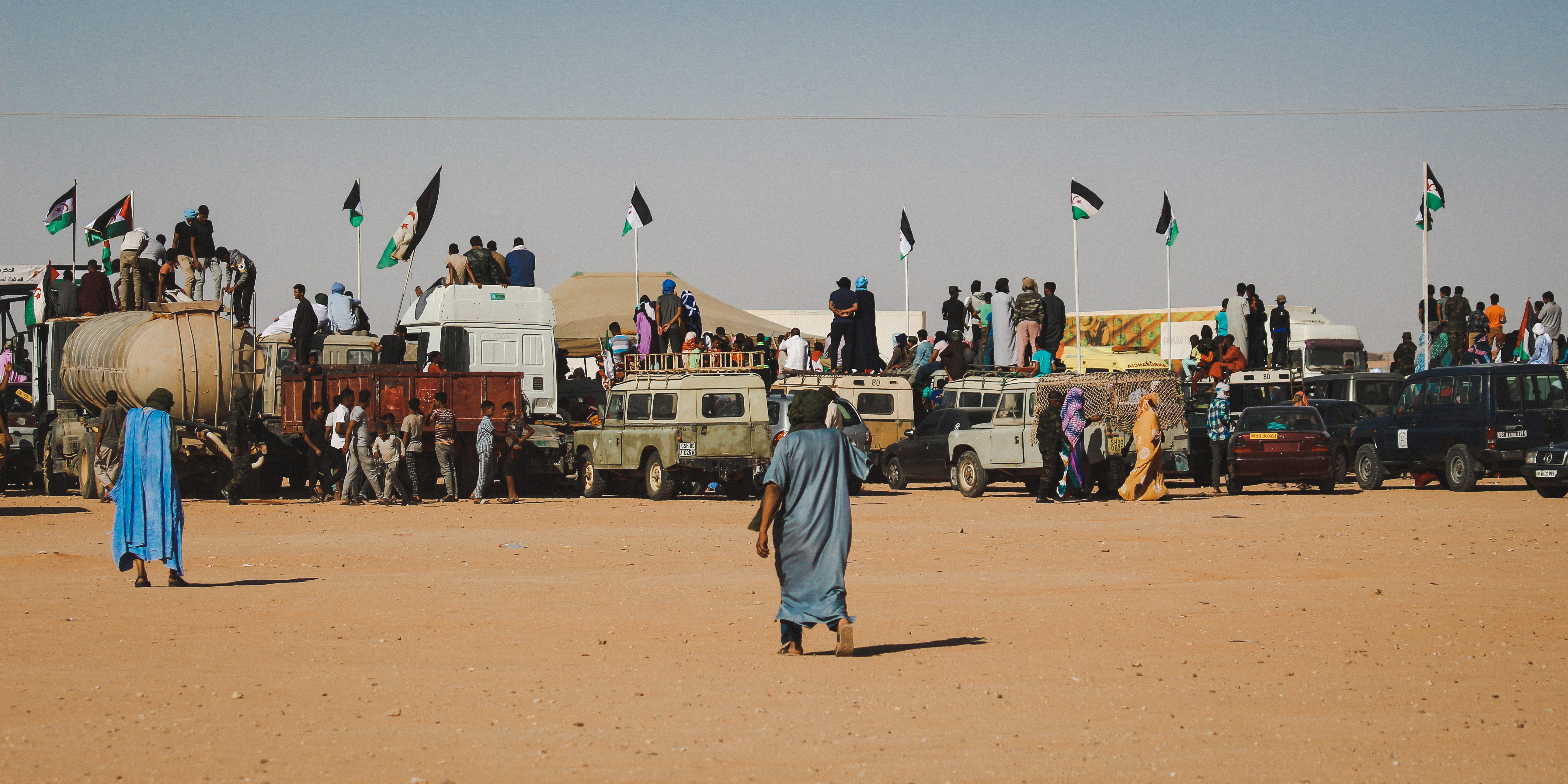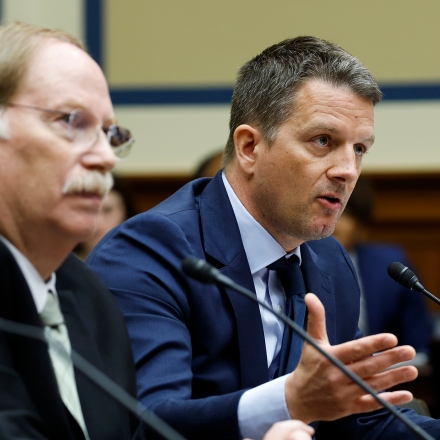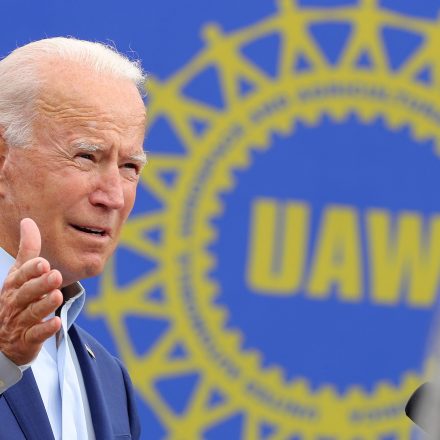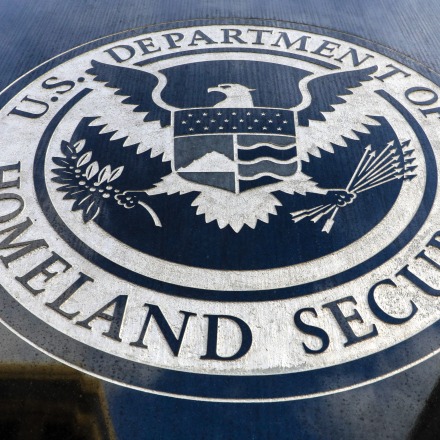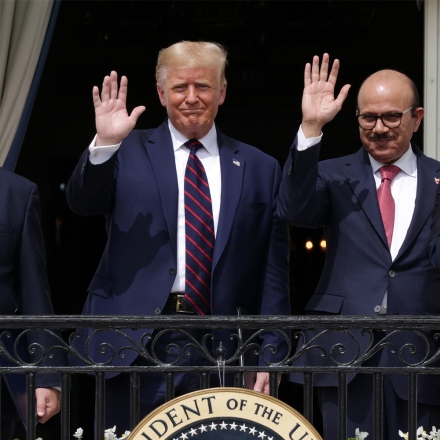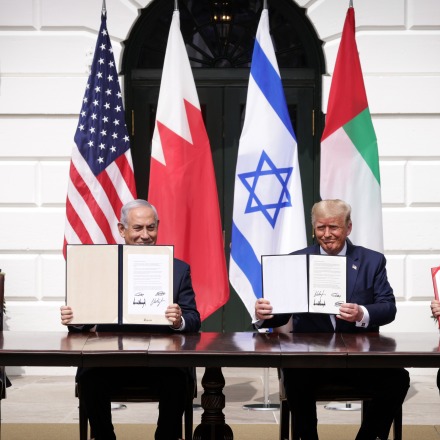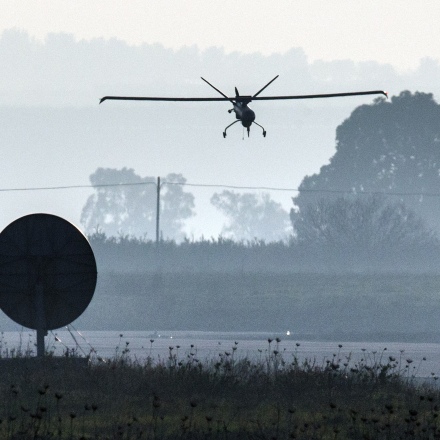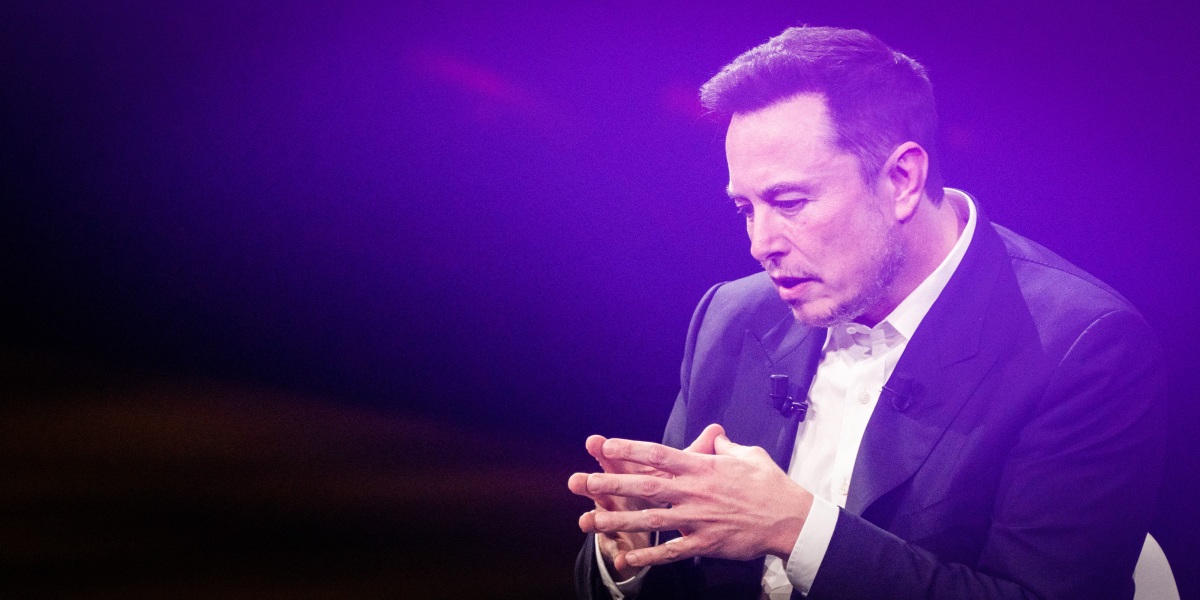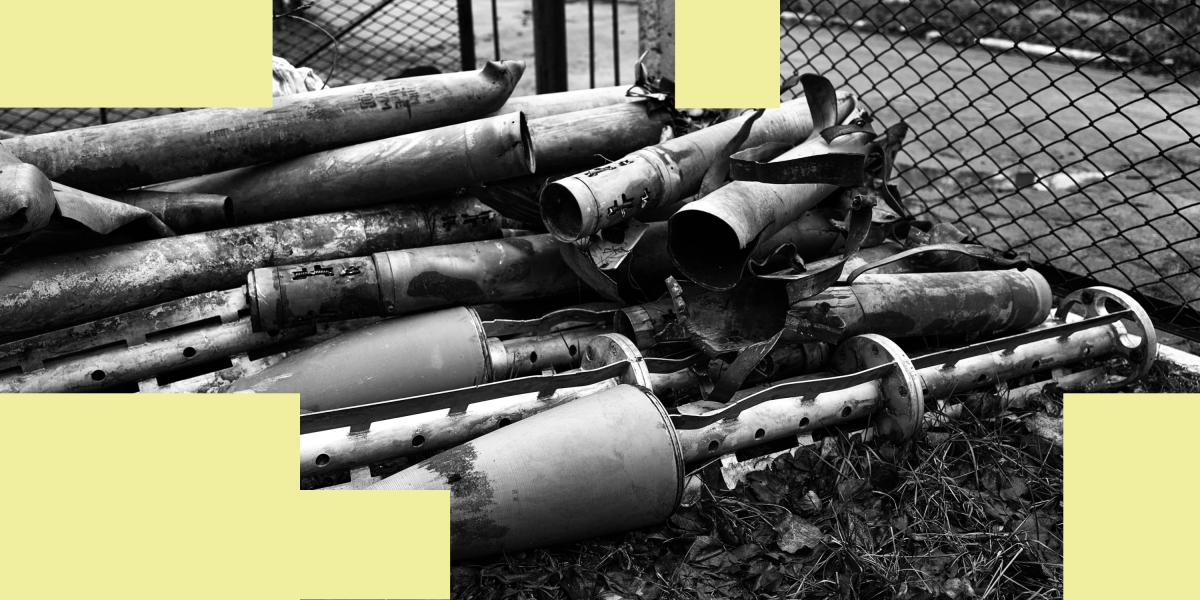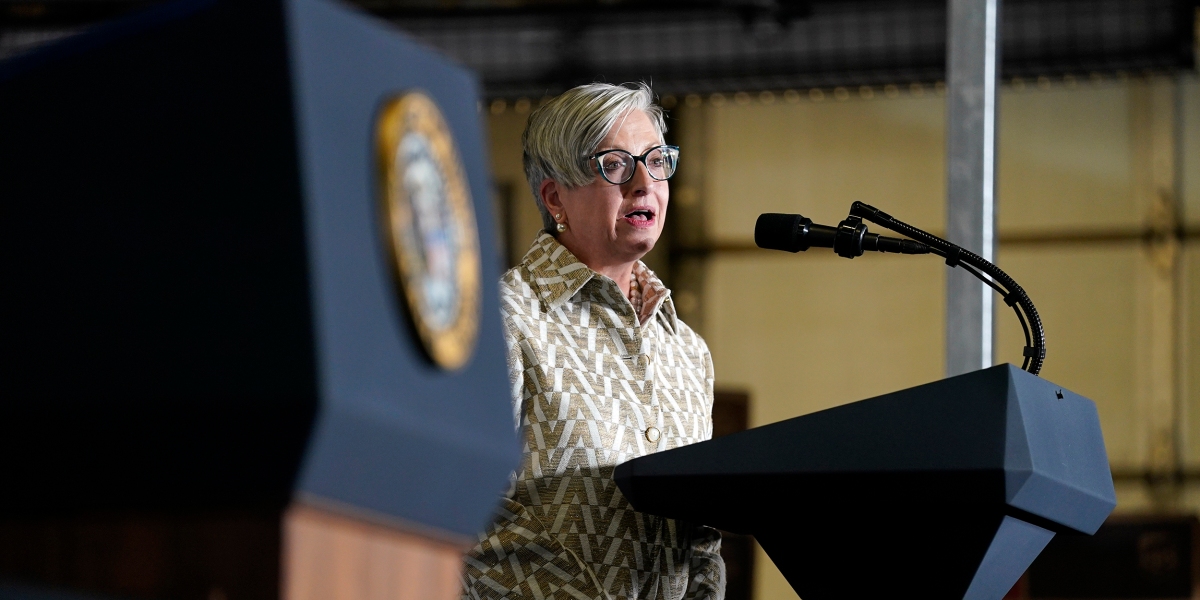When Abdelahi Emhamed first caught sight of the two drones overhead, he thought it was normal. A 24-year-old fighter in the Polisario Front, he had become accustomed to Moroccan surveillance drones and had learned to shrug off the occasional sighting as a matter of course.
A young man with a tired smile, Emhamed joined the army in 2020 when a 29-year ceasefire between the Polisario Front and Morocco came to an abrupt end. The Front has fought for nationhood for Western Sahara’s indigenous Sahrawi population for 50 years; Morocco occupied Western Sahara in 1975, and Emhamed grew up on stories of a lost land while living in refugee camps near Tindouf, a town in an inhospitable desert corner of southwestern Algeria. When the ceasefire ended, Emhamed jumped at the opportunity to join the armed forces
He became part of a small unit of mobile fighters sleeping in the open between a smattering of thorny acacia trees amidst a ceaseless repetition of flat, brown, and black-pebbled plains. On a November morning in 2022, he saw the drones far in the sky. It was a beautiful and quiet time of day, and his team sat down to make tea while they waited for orders. Sahrawis prepare tea by pouring it boiling hot in and out of cups in a practiced waterfall until each small glass is filled with a thick topping of foam. By the time the chink of the glasses was interrupted by the buzz of the returning drone, it was already over. Emhamed started to run as the rocket reached ear-piercing levels. He was just feet away when the blast bowled him over. When he got up, the little metal tea kettle and the glasses were gone; only a smoking hole remained. Around him, bodies were scattered. Four men from his unit of 10 were dead.
In December 2020, a month after the end of the ceasefire between Morocco and the Polisario, then-President Donald Trump declared U.S. support for Morocco’s sovereignty over Western Sahara. The recognition contravened the United Nations’ position, which considers Western Sahara a “non-self governing territory,” a euphemism for a colony. In return for U.S. support on Western Sahara, Morocco joined the Abraham Accords, a series of diplomatic deals brokered by Trump and his son-in-law, Jared Kushner, that resulted in the United Arab Emirates, Sudan, Bahrain, and Morocco normalizing relations with Israel. Since then, Rabat has gone from having covert ties with Tel Aviv to becoming its open ally, and Israel has sold at least 150 drones to Morocco.

Photo: Pesha Magid, Andrea Prada Bianchi
The proliferation of drones in Morocco makes an already unequal war between Morocco and the Polisario completely asymmetrical. The Polisario fight with mortars, drive in repurposed sand-brown Toyotas and old Land Rovers, and rely on traditional guerrilla tactics to try and melt back into the desert. Meanwhile, Morocco has purchased drones from Israel, Turkey, and China, enabling them to carry out attacks deep in Sahrawi territory. Chinese and, especially, Turkish drones appear to be carrying out the majority of strikes, but the Israeli ones are more sophisticated when it comes to surveillance technology.
“Sahrawi people feel that every day, we become similar to Palestinians,” said Mohamed Sidati, the foreign affairs minister of the Sahrawi Arab Democratic Republic, the name Sahrawis have given their state. Morocco controls an estimated 80 percent of Western Sahara, including the areas rich in phosphate and other valuable resources. To control that territory, Morocco built a 2,700 km sand wall, known as a berm, that snakes through Western Sahara and divides the land in two. On the Moroccan-controlled side of the berm, in what Sahrawis call the “occupied territories,” Sahrawis live under surveillance and face harassment, detention, and torture if they lobby for independence, according to human rights organizations. On the Polisario-controlled side of the wall, Sahrawis have been largely ignored by the international community, while the Abraham Accords have enabled Morocco to heighten its attacks with the help of the latest in drone technology, fresh from Israel.

Map: The Intercept
Heron Drones
While Morocco’s purchase of Israeli drones has been reported since 2014, their use in Western Sahara is less well documented. A local journalist shared photos with The Intercept that had circulated on social media and show an Israeli Heron drone at Dakhla airport, a city on the Moroccan-controlled side of Western Sahara; the photos were dated from late 2020 and early 2021. Details from the hangar in the photos match images of Dakhla airport. Additionally, commercial satellite images show what strongly resembles a Heron drone outside the hangar in October 2021.
Israel first sold three Heron drones to Morocco in a one-time French-brokered deal six years before the official rapprochement between the two states. But after the Abraham Accords, the military deals were ramped up. In November 2021, then-Israeli Defense Minister Benny Gantz visited Rabat to sign the first defense memorandum of understanding between the two countries. Days later, Haaretz reported a $22 million sale of exploding Harop drones to Morocco. In September 2022, Morocco purchased 150 more Israeli drones.
Federico Borsari, a researcher specializing in unmanned technologies at the Center for European Policy Analysis, said that Morocco owns or has bought 150 WanderB and ThunderB vertical takeoff and landing drones produced by BlueBird Aero Systems, three Heron TPs and Harop loitering munitions produced by Israel Aerospace Industries (decommissioned by France and transferred to Morocco), and four Hermes 900s produced by Elbit Systems. Borsari used publicly available information to make this assessment. Morocco also owns Turkish Bayraktar TB2 drones and Chinese Wing Loong drones, both of which are used for combat.

Photo: Maxar Technologies via Google Earth
It is unclear whether Israeli drones that are apparently being used in Western Sahara solely provide surveillance and target recognition, or if they also directly attack targets. Sidi Owgal, a senior military official within the Polisario who currently serves as the head of presidential security, told The Intercept that Israeli drones do both. Abwa Ali, a commander within the Polisario who regularly leads attacks against Moroccan bases along the berm, said that he had personally seen missile fragments with Hebrew lettering on them. Some of Morocco’s Israeli drone arsenal could indeed be used as attack drones: The Heron TP and the Hermes 900 can be used for both surveillance and attacks, while the Harop is only for strikes. “The Harop are what we call ‘loitering munitions’; they are expensive and they can hit only once because they destroy at the impact,” said Borsari. “They would most likely be used against high-value targets.”
While it’s unclear whether Israeli drones are being used to launch missiles, Morocco has acquired drones from other countries that appear to be used for that purpose. For instance, Turkey sold 13 Bayraktar TB2 attack drones to Morocco in 2021. In the Sahrawi refugee camps in Algeria, The Intercept examined missile scraps that indicate the TB2s are being used to attack targets in Western Sahara. Some fragments bear the label “MAM-L,” while one piece had the word “Roketsan” written on it. “MAM-L” is the name of a laser-guided bomb manufactured by the Turkish defense ministry contractor Roketsan, and the bomb is typically launched from the Bayraktar TB2. “The sensors on Israeli drones are very sophisticated,” said Borsari. “It is possible that Morocco uses Israeli drones for target recognition followed by an attack with other drones, like the Turkish ones.” He added that “in general, the performances of the Turkish and Chinese sensors are currently absent or lower.”
Owgal and Sidati, the foreign affairs minister, claim that Israeli advisers are on the ground on the Moroccan side of the berm counseling the Royal Moroccan Armed Forces on their use of drone technology. “They are there … not far from the berm,” said Sidati, though he declined to share any evidence, saying it was secret. Borsari believes “it is not only possible but very likely that Israel sent advisers on the ground in Morocco to train the Royal Armed Forces in the use of drones.” Moroccan media has also stated that Rabat plans to manufacture “kamikaze” drones in partnership with Tel Aviv, and Israeli company Elbit Systems recently announced the opening of the two factories in Morocco to produce “defense systems.”
Officials from Israel’s Ministry of Defense and Israel Defense Forces refused to comment on any of these allegations.
Gaici Nah, the operations manager of Polisario-linked Sahrawi Mine Action Coordination, claims that between 80 and 100 civilians have been killed and injured since the end of the ceasefire in 2020, but did not say how many of each. Nah claims to have documented over 60 drone strikes using a combination of witness statements, news reports, and Polisario military statements. (No Polisario official would comment to The Intercept on the number of military casualties.) Not only Sahrawi citizens have been targeted.
In November 2021, Algeria claimed Morocco used “sophisticated weaponry” to strike three Algerian truckers as they were reportedly passing through Polisario-controlled Western Sahara. In 2022, two Mauritanian citizens were reportedly killed by Moroccan drone strikes. Sidati also alleged that there were many civilian casualties. “The Moroccans have a scorched-earth policy,” he said.
The U.N. Mission for the Referendum in Western Sahara — or MINURSO, a peacekeeping mission established at the start of the ceasefire to monitor the conflict and carry out an independence referendum (that never happened) — stated in their most recent report, in October 2022, that they were only able to independently confirm casualties in one drone strike and observed traces of human remains at four other sites. They additionally documented 18 drone strikes and confirmed aerial strikes in eight instances. However, U.N. officials said they have limited access to the ground. “Because of the military operations and restrictions on the east side of the berm, patrolling does not account for all of the incidents,” said Yusef Jedian, the head of MINURSO’s Liaison Office in Tindouf.

Photo: Pesha Magid, Andrea Prada Bianchi
While reporting in the Sahrawi refugee camps in Algeria, The Intercept spoke to a witness of a strike against civilians. Abd Jaleel, a goat and camel farmer, fled his home in November 2021 as the war with Morocco made living in Polisario-controlled Western Sahara too dangerous. Near the Mauritanian border, he saw his neighbor, 29-year-old Salih Mohamed Lamis, another goat trader who had also fled their town as the war heated up. Lamis was about 6 km ahead of him, driving a Land Rover carrying water supplies. As they approached the border, around 11 in the morning, he heard a muffled explosion. At first, he did not realize it was a drone strike, but in the evening, others retrieved Lamis’s body and brought it to Jaleel. Lamis’s face was mangled so badly that it resembled ground meat; his body was completely burned; and when Jaleel attempted to move him, his skin stuck to his own hand. Since the strike, Jaleel has lived in fear of hearing the sound of a drone again. He grows anxious when he is outside in the open, thinking he could be hit at any time. “You can’t hide from the sky,” he said.
In a comment to MINURSO, Morocco had denied targeting civilians in Western Sahara, while also stating that no civilians should live there. “There is no reason to justify the presence of civilians or Algerian nationals, or of other nationalities, in this area,” wrote the permanent representative of Morocco to the United Nations to MINURSO in November 2021. This type of statement is rare, as Morocco generally does not publicly acknowledge the war. During The Intercept’s visit to the Sahrawi camps at the end of May, news spread of a new drone strike against Polisario soldiers; six reportedly died.
“Morocco says they don’t have a war. But why do they have drones attacking on the other side of the berm then?”
“Morocco says they don’t have a war,” a U.N. official told The Intercept, asking that their name not be used because of the sensitivity of the issue. “But why do they have drones attacking on the other side of the berm then? They say they don’t have a war. So, this is how they are enjoying peace.”

Photo: Pesha Magid, Andrea Prada Bianchi
Camp David Host
Contacts between Morocco and Israel have always been quite friendly compared to the average Israel-Arab world relationship. Jewish communities have historically been present (and well accepted) in Moroccan cities. Last December, Israeli President Isaac Herzog wrote a letter to King Mohammed VI of Morocco to thank him for the shelter the kingdom gave to Jews during the Holocaust. After World War II, most Moroccan Jews immigrated to Israel, but the bonds remained strong.
Morocco hosted some of the Israel-Egypt secret talks that would lead to the Camp David Accords in 1978, and King Hassan II was a firm sustainer of the détente between Tel Aviv and Cairo. Israel and Morocco established low-level diplomatic relations in 1994 when Tel Aviv opened a liaison office in Rabat. The office closed after the Second Intifada in 2000, but informal relations never stopped. In 2021, the Israeli representation office in Rabat reopened.
The Abraham Accords opened the way to official relations, and it seems that Morocco and Israel were just waiting for an opportunity to start doing business together. Since 2020, the two countries have implemented a long series of economic and military agreements beyond the sale of drones. For the first time, Israeli troops from the elite Golani unit participated in Africa Lion, an 18-country joint military drill in Morocco, which completed on June 18. In 2021 and 2022, respectively, Gantz, Israel’s then-minister of defense, and then-Head of Israel Defense Forces Aviv Kochavi visited Morocco and signed several military deals, including a $500 million contract for the delivery of the Barak MX missile defense system to Rabat. Early this year, one of the Pentagon Discord leaks allegedly revealed that the system was scheduled to arrive in Morocco in mid-2023. Morocco is reportedly also in advanced negotiations to receive Israeli Merkava tanks. Rabat and Tel Aviv are also cooperating at an intelligence level. Morocco has widely been reported (and accused by other countries) as one of the most eager users of the Pegasus spyware developed by the Israeli NSO Group.
Meanwhile, economic cooperation is booming. According to U.N. data analyzed by The Intercept, in pre-Abraham 2019, trade between Israel and Morocco was at $70.7 million. In 2022, the figure reached $178.7 million, and Tel Aviv has declared it is targeting $500 million. From 2019 to 2022, exports from Israel to Morocco increased tenfold, from $3.8 million to $38.5 million. Western Sahara plays an important role in the love story between the two countries. In 2021 and 2022, two Israeli companies, Ratio Petroleum and NewMed Energy, obtained from Morocco rights to research and potentially exploit two separate offshore blocks in the Atlantic Ocean just off Western Sahara’s coastline. Moroccan local news also announced Israel’s Selina group would soon open a hotel in Dakhla. For Morocco, foreign investments in what it considers its “southern province” mean external recognition of its claims on the territory.
Israeli businesses, like other foreign actors, don’t seem concerned about international law when investing in Western Sahara. A 2002 U.N. legal opinion deemed illegal the exploration and exploitation of mineral resources in a “non-self governing territory” like Western Sahara without the authorization of the people of that territory. In three following rulings, the European Union Court of Justice has, in various forms, condemned trading in Western Sahara without the consent of the Sahrawi people. At the end of 2022, Western Sahara Resource Watch, a pressure group that monitors resource exploitation in Moroccan-controlled Western Sahara, asked NewMed Energy about the legitimacy of the deal. The company replied that “all our actions in the past and in the present are done in accordance with and subject to international law and Israeli law and the laws in force.” When WSRW asked three times “which country’s laws” are applicable to Western Sahara, NewMed Energy stopped replying.
In March last year, WSRW reported the first shipment of phosphate rock from Western Sahara to Israel. Erik Hagen, board member of WSRW, told The Intercept that the cargo was very small, and it is the only one they observed toward Israel. OCP, the Moroccan company extracting and exporting phosphate rock in Morocco and Western Sahara, hasn’t replied to a request for comment about the episode.
Morocco’s drone attacks do not appear to have sapped any energy from the Polisario’s long war; if anything they are adding fuel to the fire. Emhamed, the drone strike survivor, had to get treatment for a shrapnel injury, but he has already returned to the camps to participate in a military parade for the Polisario’s 50th anniversary. He remains haunted by the people he lost in the strike. A quiet man who wears his military fatigues even when at home, Emhamed seems perennially exhausted. He stays up late at night and chain-smokes L&M reds. A few hours after drawing lines in the sand outside his home to show The Intercept where the strike scattered the bodies of his unit, he took a drag off a cigarette. “No one can understand the front unless they’ve seen it with their eyes,” he said. Despite the drones, he is planning to go back to the front line, attacking the Moroccans on the other side of the berm.
